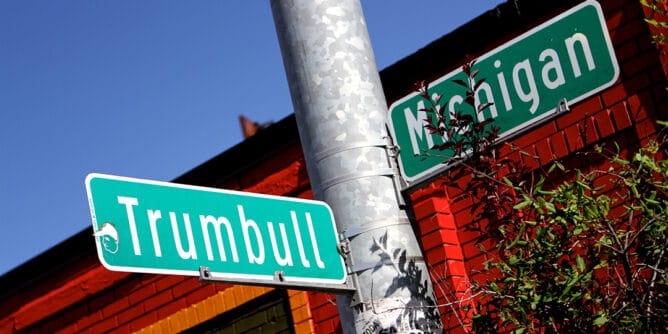
From the late 19th century until the turn of the millennium, the corner of Michigan and Trumbull served as the hallowed ground for the Detroit Tigers, witnessed historic events, and left an indelible mark on American sports.
The story of this renowned corner begins in 1896 when Bennett Park first opened its gates to baseball fans. It became the home of the Detroit Tigers for the next fifteen years, witnessing the rise of legends and the triumphs of the team. But as time progressed, so did the stadium. In 1912, the impressive Navin Field replaced Bennett Park, setting the stage for a new era of baseball in Detroit. The stadium’s name changed to Briggs Stadium in 1938, paying tribute to Walter Briggs Sr., the team’s owner. And in 1961, it reached its final incarnation as Tiger Stadium, etching its name into the hearts of sports enthusiasts for generations to come.
Tiger Stadium wasn’t just a baseball stadium; it also played a significant role in football history. From 1938 to 1974, the Detroit Lions, a staple of the National Football League (NFL), called this stadium their home. The echoes of roaring crowds and the thunderous collisions between football titans filled the air, making it a cherished place for football aficionados.
Throughout its existence, Tiger Stadium was the backdrop for numerous historic events that captivated sports fans worldwide. It proudly hosted four World Series championships, witnessed the dazzling displays of talent in three MLB All-Star games, and provided the stage for two NFL championship games. This legendary corner, affectionately known as “The Corner,” also bore witness to remarkable individual achievements.
One such moment was when baseball icon Babe Ruth smashed the longest home run in history at Tiger Stadium, leaving spectators in awe. It was also where he achieved the remarkable feat of hitting his 700th home run, forever etching his name in the annals of sports history.
Tiger Stadium was the setting for both triumph and tragedy. In 1939, boxing legend Joe Louis defended his title with a resounding 11th-round knockout of Bob Pastor. This remarkable victory elevated “The Corner” to even greater heights, solidifying its place in the sporting pantheon.
However, the stadium also experienced somber moments. It was here that baseball legend Lou Gehrig’s incredible streak of 2,130 consecutive games came to an end. In a poignant twist of fate, this final game marked the end of Gehrig’s illustrious career due to the debilitating effects of the disease that would later bear his name.
Tragically, Tiger Stadium also became the site of the untimely passing of Chuck Hughes. In 1971, during an NFL game, Hughes collapsed on the field and became the only NFL player to die during a game.
“The Corner” of Michigan and Trumbull stands as a testament to the enduring power of sports and the memories they create. From the humble beginnings of Bennett Park to the glory days of Tiger Stadium, this corner of Michigan holds a special place in the hearts of sports enthusiasts. It witnessed the triumphs, tragedies, and remarkable achievements of countless athletes, etching its name in history. Today, as we remember the legends and historic events that unfolded at this iconic venue, we pay homage to the lasting impact it had on the sports world and the collective memory of Keenerfans everywhere.

